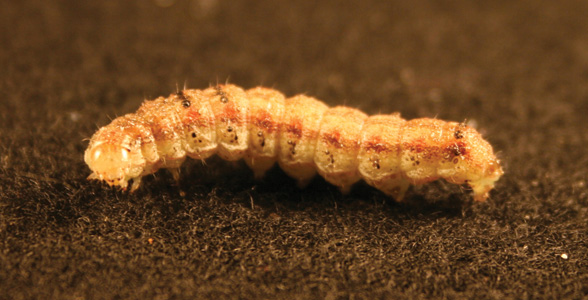Microbes cause disease in insects. Bug-killing microbes have been used as pesticides to control insect pests for a long time.
If bugs were more susceptible to these microbes, we could control them with fewer pesticides. If bugs were less efficient at transferring diseases like malaria, world disease rates would plummet.
UT Institute of Agriculture researcher Juan Luis Jurat-Fuentes thinks the key to unlock these two big ifs could be found in insect intestinal cells. That’s right—bug guts.
Many a caterpillar has met its fate in Fuentes’s lab on the UT agricultural campus in Knoxville, all for a good cause.
“Stem cells in bug guts are all about healing,” Jurat-Fuentes says. “They hold the key to both pest control and disease transmission.”
These cells quickly renew themselves after an assault by microbes used as pesticides. But just how they do it remains a mystery. If research can uncover what allows such quick cell renewal, then scientists might be able to find a way to disrupt the process and make insects more susceptible to pest control measures. Identifying the growth factors then could open new avenues of research exploring disease transmission.
Jurat-Fuentes and his research team work in the Department of Entomology and Plant Pathology.



